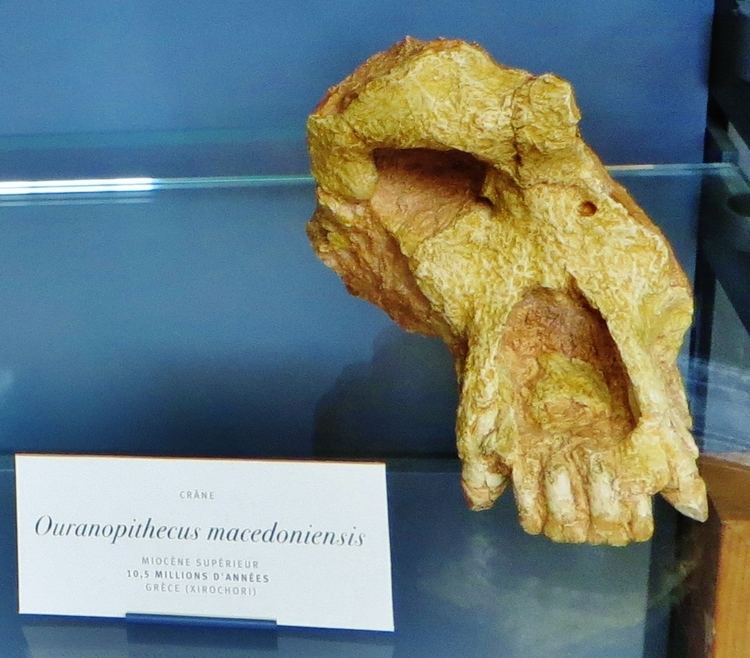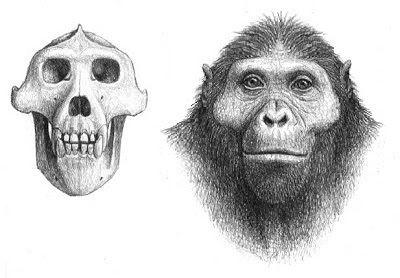Rank Species | Phylum Chordata | |
 | ||
Scientific name Ouranopithecus macedoniensis Similar Ape, Great apes, Primate, Ankarapithecus, Mammal | ||
Ouranopithecus macedoniensis is a prehistoric species of Ouranopithecus from the Late Miocene of Greece.
Contents
This species is known from three localities in Northern Greece. The type location is Ravin de la Pluie. The other localities are Chalkidiki and Xirochori. It is known from a large collection of cranial fossils and few post cranial. The material has been dated to the late Miocene 9.6 – 8.7 million years old, so slightly earlier than O. turkae. To some this suggests O. turkae is the direct ancestor to O. macedoniensis although it is generally accepted that they are sister taxons.
Etymology
The specific epithet macedoniensis is due to the holotype fossil's discovery in Macedonia, Greece.
Habitat
Examination of dental remains of O. macedoniensis and associated bovid species indicate a habitat of low tree cover and a rich herbaceous layer.
Morphology
O. macedoniensis had a large, broad face with a prominent supraorbital torus. It also had square-shaped orbits. O. macedoniensis may have had a relatively large body size. The post cranial evidence is thin, but the dentition of O. macedoniensis suggests extreme sexual dimorphism, a far higher degree than that seen in any extant great ape. The ape was probably a quadruped. It is not possible to postulate on how O. macedoniensis used the trees but it seems likely that it did. O. macedoniensis's molar enamel cover was fairly thick and had low cusps. The male O. macedoniensis had large canine teeth with shearing lower premolars.
Diet

Based on the heavily pitted surface of the second molar of Ouranopithecus macedoniensis, it is assumed that its diet consisted of harder foods such as nuts or tubers.
Behaviour

Behaviour is very difficult to infer in species with such a small diversity of fossil remains. It is reasonable to suggest it may have been either solitary or group living. The large body size may have made climbing difficult in some aspects so it may have been a terrestrial forager but this is purely speculation within the literature.
